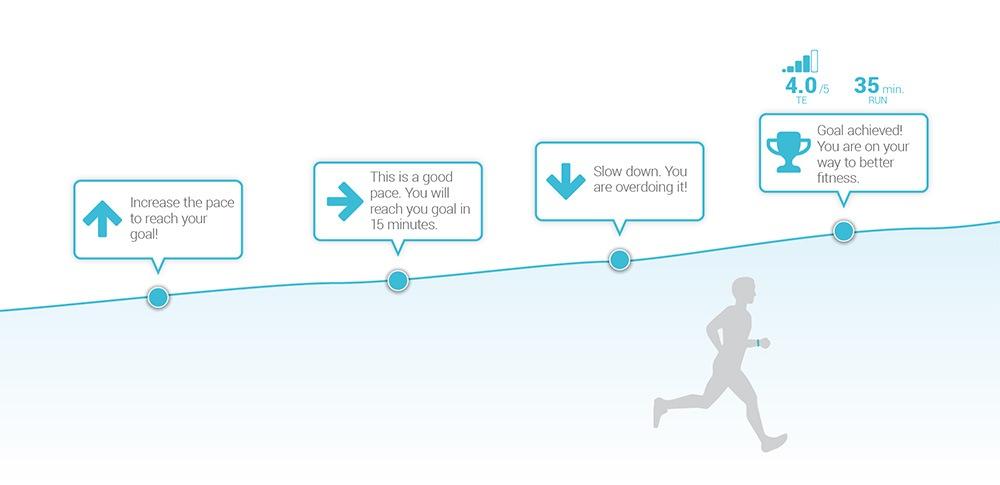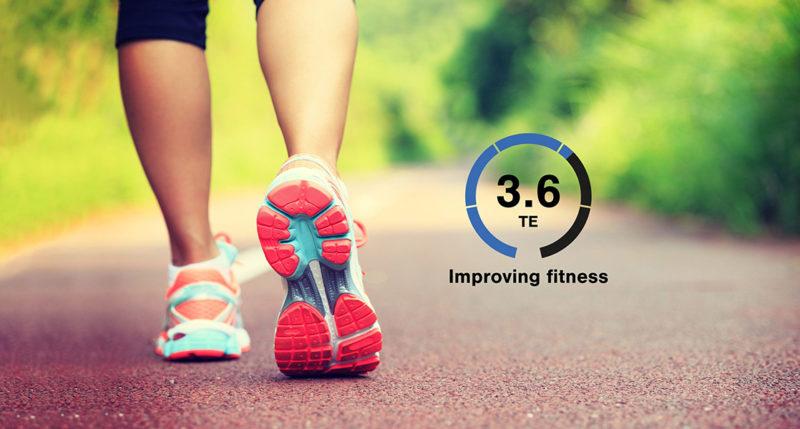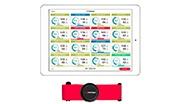
Many runners struggle with their running pace. Beginners aren’t sure how fast they should run, and more experienced runners want to know how to run faster.
These questions make sense, since running is all about moving forward and pace is one of the key variables. Pace tells how long it will take to cover a certain distance.
It is easy to understand and easy to compare. Or is it?
Pace is not necessarily the most valuable lens through which to examine your runs. Instead of thinking “how fast,” a better question might be “how hard.” Shifting your focus towards intensity can be a real game changer.
Same Pace, Different Intensities
Many things affect running pace. Men typically run faster than women and fitter folks run faster than those who are out of shape. In the end, pace isn’t dependent on the runner. An 8-minute mile is an 8-minute mile, regardless of whose sneakers are pounding the pavement.
Intensity, on the other hand, is much more personal. Thinking in terms of intensity helps you discover the level of challenge that is right for you, personally.
There are several ways to evaluate training intensity, but the best way is in terms of how much oxygen your body is using. This is expressed as a percentage of your maximal oxygen uptake (VO2max), the defining measure of cardiorespiratory fitness.
That 8-minute mile we mentioned earlier? The effort required to keep that pace feels easy for one (60-70 % of their VO2max) and hard for another (80-90 %VO2max). The pace is the same, but the intensity, perceived effort and resulting physiological impact are totally different.

Running intensity is much more personal than running pace: 8-minute mile is easy for one and hard for another.
Training Effect Reveals the Physiological Impact
In terms of effective training, it is neither the specific pace or distance you run that eventually matters, but the impact of the workout on your body. Without any physiological impact there are no training adaptations and no improvements.
To help you understand the relationship between how you train and the results you will get, Firstbeat created Training Effect (TE). Training Effect scores (0.0-5.0) predict how your workout will influence your future fitness level by placing the duration and intensity of your workout into the context of your current fitness and activity history. As a result, you can easily see whether your run improved or maintained your fitness level, and when you need to step up the challenge to make a difference.
And now we get back to the intensity again. Since, two key factors that affect the Training Effect of a single run are the intensity and the duration, the longer and the harder the workout is, the bigger Training Effect (0.0-5.0) it has.
As discussed in our earlier blogs, a bigger Training Effect isn’t always better. Instead, to improve your fitness and reach your long-term goals, you should vary your workouts in terms of intensity, duration and resulting TE-values.
Both easy runs and high-intensity ones have their place in an effective training plan. Before you go for a run, you need to know where you are aiming in terms of intensity. Is it time for a long, relaxed jog or a hard run that makes your legs burn? An effective Training Plan will guide you towards an optimal combination of different types of exercise with different Training Effect goals.
Firstbeat Personalized Training Plans help you out with this. They provide recommendations on how you should exercise to achieve your goals. They utilize your current VO2max Fitness Level, activity history and background information to make prescriptions that include a suitable Training Effect goal and training time.
Real-time Feedback Keeps You on Track
However, it is not always easy to follow the plan no matter how good prescriptions you have.
It’s easy to fall into the trap of running too fast, meaning your intensity will be too high. This, in turn, leads to overshooting your Training Effect target, leading to longer Recovery Times and increases your chances of unproductive efforts and overloading.
Alternatively, lost in thought along the way, you may find yourself running at a pace that has become slower and slower without even noticing.
Firstbeat Real-Time Coaching solves this problem by examining your performance as you go along and letting you know when you need to slow down or step up your effort. As a result, you can be confident of hitting your target every time you lace up and head out the door.
While the right pace might change from day to day, the right intensity will always be straight from your heart. Personalized Training Plans and Real-Time Coaching are like a perfect coach, letting you know when and how to train and providing insight along the way to ensure you reach your goal safely and effectively.
All you need to do is put on your sneakers and run.

Firstbeat Real-Time Coaching will pave a safe and physiologically customized path towards your goal.
If you liked this article, you should subscribe to our mailing list
You might also be interested in

How and When Should I Exercise? The Right Plan Changes with You
Personalized Training Plan offers workouts tailored just for you. Your fitness level and training history are used to help you achieve your goals safely and effectively.


The Bigger the Training Effect, the Better?
You need to push your limits to improve your VO2max and get Aerobic Training Effect of 3.0-5.0. However, exercise can be very useful, although your TE value isn’t that high. The variation is the key to success.
